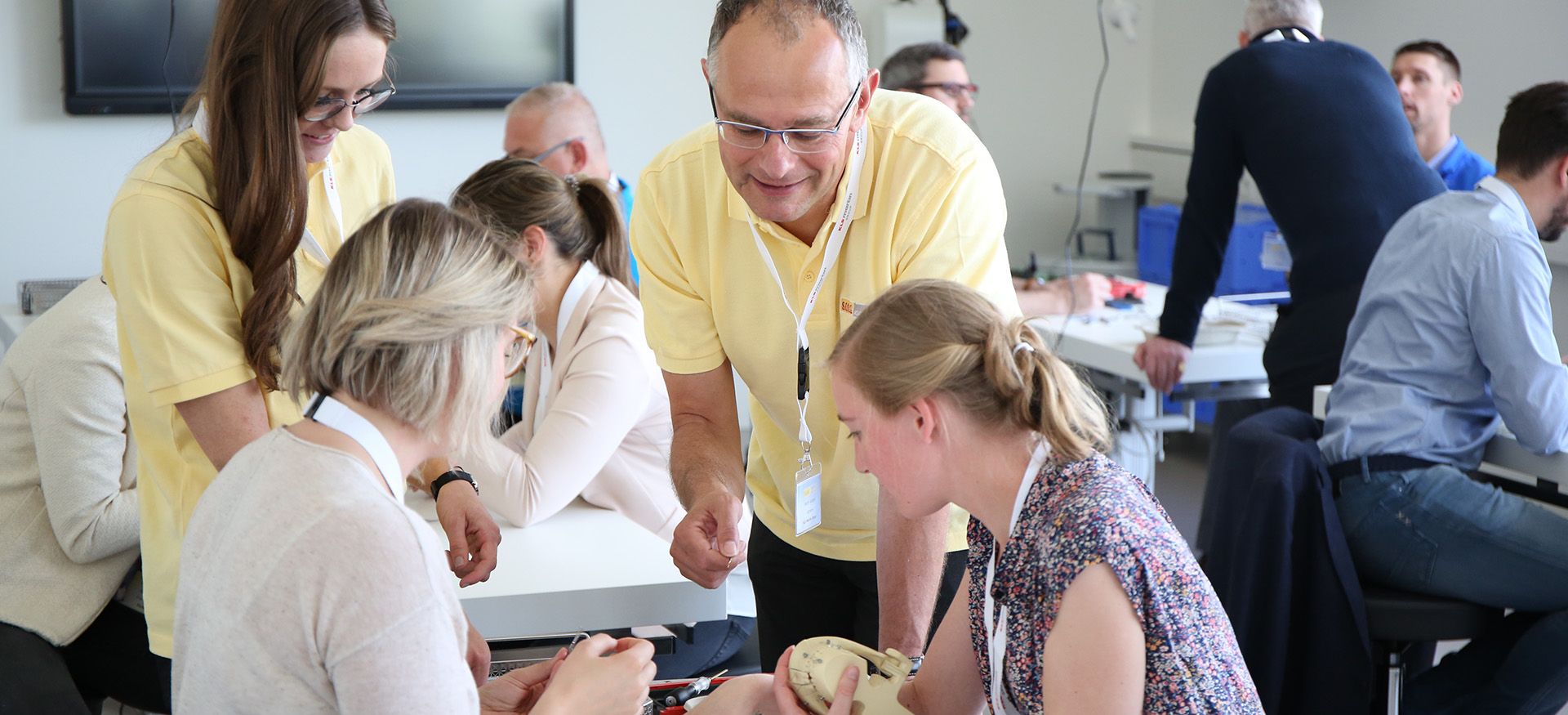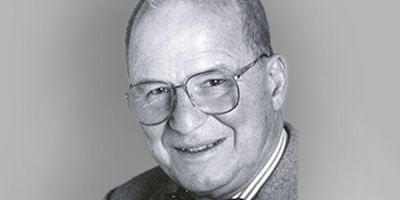Franz Härle was born July 17th, 1937, in Berlin as the son of the gynecologist Dr. Franz Härle and the dentist Dr. Mrs. Liesel Härle. He grew up in Tübingen, Swabia, and graduated first in Dentistry 1964, and secondly in General Medicine 1966, being educated at the universities of Berlin, Munich, Vienna, Tübingen, and finally Freiburg. In the university hospital of Freiburg, he had received his postgraduate training by Profs. Eschler and Schilli, and became in 1969 a double qualified specialist in Oral & Maxillofacial Surgery. 1980 he was appointed a full professor at the Christian Albrechts University of Kiel, Schleswig-Holstein, and Director of the Department of Oral & Maxillofacial Surgery at the University Hospital. Franz Härle was married to Mrs. Lieselotte („Liesel“) von Werder, a respected artist and painter of colorful expressionistic landscape pieces “between Holstein and Hellas”. The fine family home in the first row at the firth of Kiel has often received international guests, also during the international congress of the IAOFR group in 2001 in Kiel. Hellas is a keyword for the private person Franz Härle, who loved to spend his summer vacancies with beach life and sailing at their holiday home in Greece. In his private life, Härle loved antiques and old objects. For birthday or at special occasions, the staff members usually received a little gift out of his huge fundus, for instance, a framed illustration from an antique surgical textbook. A special gift was a ship in a bottle, a model of his sailing boat in Greece, the Aglaia, which can now be found in the offices of selected maxillofacial colleagues worldwide. By appreciating these old objects Härle wanted to teach respect for the mothers and fathers of maxillofacial surgery. His often quoted humorous remark was „Nachlesen hilft gegen Erfinden“ [Reading protects against inventions].
Härle, at first, had focused scientifically on cleft lip and palate patients and published 1971 in Freiburg a “Habilitationsschrift” (comparable to a PhD thesis) on „Timing of the cleft osteoplasty“. His research contributed to the modern concepts of secondary cleft osteoplasty and staged concepts of cleft repair. During his time in Freiburg, he was interested in facial plastic surgery an came in contact with Profs. Eduard Schmid, Werner Widmaier, Stuttgart. This work resulted in a textbook on plastic facial surgery „Atlas der Hauttumoren im Gesicht“ (Hanser 1993) [facial skin tumours]. The artist Andreas Reinhard, Kiel, has illustrated this book with fine pencil drawings of facial surgical sites. They used to take classic portraits from the Prado, Madrid, as templates. Many of these were members of the Spanish Habsburgers, one of Härle's professional hobbies, because of their inherited mandibular prognathism.
In the old days, when cars were not equipped with airbags and only few safety-belts were in use, Härle's night shifts were extremely busy due to numerous polytrauma patients. Härle had been unhappy with the fixation methods for facial fractures in these times. He spoke French fluently and he came in contact with Prof. Maxime Champy from Strasbourg in the beginning of the eighties. Together with Profs. Dieter Pape and Klaus Gerlach, they adopted and promoted the principles of miniplate osteosynthesis. Together with Leen de Zeeuw they founded the Strasbourg Osteosynthesis Research Group, which grew and flourished over the years. The genes of the SORG group are the functionally stable but not fully rigid fixation of facial fractures, more an adaptation of the fractures but not a compression, which involved reduced invasiveness and small intraoral approaches. This was a disruptive innovation at that time and it took strong characters to defend these innovations. A textbook of the group, the „Atlas of Craniomaxillofacial Osteosynthesis“ (Thieme 1999, 2009) was written by Härle and co-workers.
In his early years, Härle had often visited the clinic of Prof. Hugo Obwegeser in Zürich, from where he took over numerous principles including the Stout-Obwegeser interdental wiring or the technique and instrumentation of the sagittal split osteotomy. In times before the advent of dental implants, occlusal rehabilitation of patients with atrophic edentulous jaws required special attention. In the university hospital of Kiel preprosthetic operations, such as the submucous vestibuloplasty according to Obwegeser, occasionally occupied 25% of the OR capacity. One of Härle's most respected international contributions in that field was the visor osteotomy and the augmentation of the atrophied ridge with hydroxyapatite in a resorbable tube („Kiel sausage“). These techniques were published in German language his textbook „Atlas der präprothetischen Operationen“ (Hanser 1989) [preprosthetic surgery], again illustrated by Andreas Reinhard. Härle belonged to the founding members of the International Research Group on Preprosthetic Surgery, later renamed into the International Academy of Oral and Facial Rehabiliation IAOFR. Especially in the international field, Härle was easily accessible and many close friendships have resulted from his activities, including with Profs. Bill Terry, Chapel Hill, Erik Hjørting Hansen and Søren Hillerup, Copenhagen, Paul Stoelinga, Netherlands, John Cawood, UK.
In the academic field, Härle has been an influential scientist and teacher with more than 100 listed original papers listed at Pubmed and many more in the national literature. Härle was very interested in the advancement of his pupils and was sharing all his knowledge deliberately. Numerous dental students and maxillofacial specialists were educated in Kiel. Three of his pupils achieved positions as full professors at university departments, namely Rolf Ewers, Vienna, Thomas Lambrecht, Basel und Bodo Hoffmeister, Berlin. Four habilitated (PhD) pupils became chairpersons of large maxillofacial departments, including Konrad Wangerin, Stuttgart, Thomas, Kreusch, Hamburg, Anton Dunsche, Karlsruhe, and Hendrik Terheyden, Kassel. Härle had been secretary, two times president and finally has become one of the four honorary members of the German Society for Oral &Maxillary Surgery (AGOKi), part of the German Federal Association of Dentistry (DGZMK). He was also chairman of the Dental Society of Schleswig-Holstein and from 2002-2012 chairman of the Heinrich Hammer continuing education institute of the dental chamber of Schleswig-Holstein. In 1989 he was elected as the vice dean and in 1991 as a dean of the medical faculty Christian Albrechts University of Kiel. In 2004 Härle retired to become a professor emeritus and Prof. Dr. Dr. Jörg Wiltfang took over. At that occasion, a large academic torchlight procession was organized in Kiel by his students and pupils. Looking back, Härle's dream had been to become an academic professor. He has reached his life goal and that could be felt in each of his activities.
The SORG members will always honor Professor Härle’s memory in their community.
Hendrik Terheyden and Piet Haers


